Past winters past and winters still to come.
PRIMAVERA = SPRING
La Primavera. Sandro Botticelli, Firenze
PRIMAVERA = SPRING
Spring is Here!
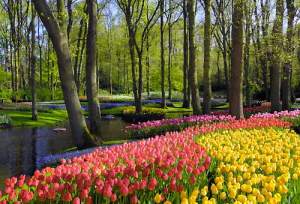 Spring is such an exciting time for a gardener. Flowers are popping up everywhere; garden plans are on the forefront of the mind; the daylight time is lengthening; and birds are singing, and preparing their nests for the arrival of their offspring.
Spring is such an exciting time for a gardener. Flowers are popping up everywhere; garden plans are on the forefront of the mind; the daylight time is lengthening; and birds are singing, and preparing their nests for the arrival of their offspring.
If I were to try and sum up spring in a single word it would be rebirth – a rebirthing of perennials, vegetation, gardens, and wildlife (or a life cycle continuation).
Spring is a natural time of rebirth, renewal, and hope – on the physical and spiritual levels. All humans have felt this way from the beginning of time. Spring is also a rebirth of life’s biorhythm, which means an increase of vibrant energy, an increased vitality, and an increase of joy and a love of life.
Springtime is a beautiful time of the year. Many consider spring to be the most anticipated, exciting, and blessed season of the year. The cold weather, low temperatures, bracing wind, and even occasional snow and ice all pass away. The deadness of the trees, the barrenness of the gardens, and the colorless grass pass away, to be replaced with refreshing showers, delightful temperatures, and 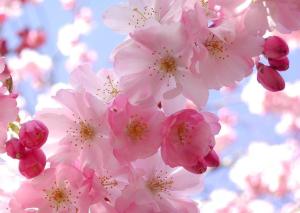 bright sunshine of March, April, and May. The summer’s burning rays and burdensome heat have not yet arrived. Spring is a delightful time!!!!!!!!
bright sunshine of March, April, and May. The summer’s burning rays and burdensome heat have not yet arrived. Spring is a delightful time!!!!!!!!
Spring seems to bring a rebirth to all of nature. The blossoms arrive, the yellow daffodils and tulips show their colors, and the trees begin to display the light green shades of new leaves. Our gardens begin to show signs of new life as the vegetables rise from the soil. Spring means rebirth, not only for human creation, but for the animals of the land, sea and sky as well
Springtime causes us think of spiritual things. First, the way God wants to bring every thing to a place of regeneration, something that we call the new birth. The resurrection of life is something special to look forward to, and the glorious newness of springtime is a reminder of this coming reality! The freshness of springtime…resurrection after a previous death…all of these combine to fill my heart with joy and hope.
 Look at the Jewish holiday of Passover – a celebration of liberation. Consider Easter – the resurrection of Christ. Both religions evolved from the spiritual traditions that preceded them. As they developed, they embraced rituals of celebration that marked the turn of season from hibernating, grey winter to lively, colorful spring. Just as Jesus rose from the tomb on Easter Sunday, the entire world comes to life with renewal and rebirth at this time of year and brings new hope to us all.
Look at the Jewish holiday of Passover – a celebration of liberation. Consider Easter – the resurrection of Christ. Both religions evolved from the spiritual traditions that preceded them. As they developed, they embraced rituals of celebration that marked the turn of season from hibernating, grey winter to lively, colorful spring. Just as Jesus rose from the tomb on Easter Sunday, the entire world comes to life with renewal and rebirth at this time of year and brings new hope to us all.
Spring is one of the four seasons, coming after the winter, but yet before summer. Just as with anything, the definition of spring can vary according to local climate, cultures and customs. When it is spring in the northern hemisphere, it will be autumn (fall) in the southern hemisphere. With the spring equinox, days are close to 12 hours longthe length of each day length gradually increasing as the season progresses. Spring and “springtime” refer to the season, and also to ideas of rebirth, rejuvenation, renewal, resurrection, and regrowth, with festivals such as Carnival, Easter and Holi are celebrated at this time.
Holi is a religious spring festival that is celebrated by the Hindus as a festival of colours, and is primarily observed in India and Nepal, 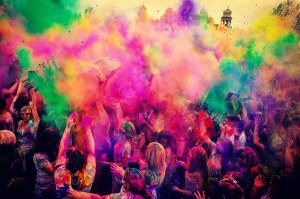 as well as by the minority Hindus in Pakistan as well as Bangladesh. Holi is observed also in countries that have a large Indic diaspora population that follow Hinduism in countries such as Malaysia, Suriname, South Africa, Trinidad and Tobago, Fiji, the United States and several other countries. Holi is of particular significance in the Braj region, which includes locations connected to Lord Krishna, Vrindavan, Mathura, Nandagon and Barsana, all of which become tourist destinations during the season of Holi. As per the Hindu calendar, Holi is celebrated on the Phalgun Purnima which comes in February or March in the Gregorian Calendar.
as well as by the minority Hindus in Pakistan as well as Bangladesh. Holi is observed also in countries that have a large Indic diaspora population that follow Hinduism in countries such as Malaysia, Suriname, South Africa, Trinidad and Tobago, Fiji, the United States and several other countries. Holi is of particular significance in the Braj region, which includes locations connected to Lord Krishna, Vrindavan, Mathura, Nandagon and Barsana, all of which become tourist destinations during the season of Holi. As per the Hindu calendar, Holi is celebrated on the Phalgun Purnima which comes in February or March in the Gregorian Calendar.
Carnival is seen as a communal celebration, especially the religious celebration in Catholic countries that takes place just before Lent (seen as a time of prayer, penance, preparation for or recollection of baptism, as well as preparing for the celebration Easter. Since early times carnivals have been accompanied by parades, masquerades, pageants, and other forms of revelry all have origins in pre-Christian pagan rites, particularly fertility rites that were connected with the coming of spring and the rebirth of vegetation. One of the first recorded instances of an annual spring festival is the festival of Osiris in Egypt; which commemorated the renewal of life brought about by the yearly 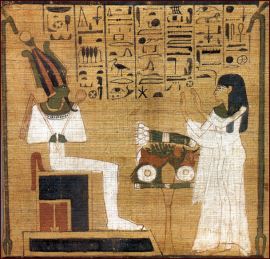 flooding of the Nile. In Athens, during the 6th century B.C., a yearly celebration in honor of the god Dionysus was the first recorded instance of the use of a float. It was during the Roman Empire that carnivals reached an unparalleled peak of civil disorder and licentiousness. The major Roman carnivals were the Bacchanalia, the Saturnalia, and the Lupercalia. In Europe the tradition of spring fertility celebrations persisted well into Christian times, where carnivals reached their peak during the fourteenth and fifteenth centuries. Because carnivals are deeply rooted in pagan superstitions and the folklore of Europe, the Roman Catholic Church was unable to stamp them out and finally accepted many of them as part of church activity. The immediate consequence of church influence may be seen in the medieval Feast of Fools, which included a mock Mass and a blasphemous impersonation of church officials. Eventually, however, the power of the church made itself felt, and the carnival was stripped of its most offending elements. The church succeeded in dominating the activities of the carnivals, and eventually they became directly related to the coming of Lent. In more recent times, the term carnival has also been loosely applied to include local festivals, traveling circuses, bazaars, and other celebrations of a joyous nature, regardless of their purpose or their season.
flooding of the Nile. In Athens, during the 6th century B.C., a yearly celebration in honor of the god Dionysus was the first recorded instance of the use of a float. It was during the Roman Empire that carnivals reached an unparalleled peak of civil disorder and licentiousness. The major Roman carnivals were the Bacchanalia, the Saturnalia, and the Lupercalia. In Europe the tradition of spring fertility celebrations persisted well into Christian times, where carnivals reached their peak during the fourteenth and fifteenth centuries. Because carnivals are deeply rooted in pagan superstitions and the folklore of Europe, the Roman Catholic Church was unable to stamp them out and finally accepted many of them as part of church activity. The immediate consequence of church influence may be seen in the medieval Feast of Fools, which included a mock Mass and a blasphemous impersonation of church officials. Eventually, however, the power of the church made itself felt, and the carnival was stripped of its most offending elements. The church succeeded in dominating the activities of the carnivals, and eventually they became directly related to the coming of Lent. In more recent times, the term carnival has also been loosely applied to include local festivals, traveling circuses, bazaars, and other celebrations of a joyous nature, regardless of their purpose or their season.
The Easter Season –Easter is the oldest Christian holiday, but how much of the most public and common celebrations of Easter today 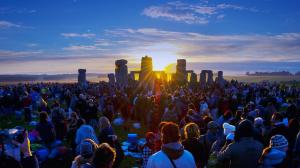 remain Christian in nature?Celebrating the beginning of spring may be among the oldest holidays in human culture, the spring equinox is the end of winter and beginning of spring. Biologically and culturally, it represents for northern climates the end of a “dead” season and the rebirth of life, as well as the importance of fertility and reproduction.
remain Christian in nature?Celebrating the beginning of spring may be among the oldest holidays in human culture, the spring equinox is the end of winter and beginning of spring. Biologically and culturally, it represents for northern climates the end of a “dead” season and the rebirth of life, as well as the importance of fertility and reproduction.
Fertility and Rebirth in the Spring:Most cultures around the Mediterranean are believed to have had their own spring festivals: whereas in the north the vernal equinox is a time for planting, around the Mediterranean the vernal equinox is a time when the summer crops begin to sprout. This is an important sign of why it has always been a celebration of new life and a triumph of life over death.
Pagan Elements of Modern Easter Celebrations:The name “Easter” comes possibly from an Anglo-Saxon lunar goddess, on whose feast day was held on the first full moon following the vernal equinox — a similar calculation as is used for Easter among Western Christians. On this date the goddess is believed to mate with the solar god, conceiving a child who would be born 9 months later on Yule, the winter solstice which falls on December 21st.
Two of her important symbols were the hare (both because of its fertility and because ancient people saw a hare in the full moon) and the egg, which symbolized the growing possibility of new life. Each of these symbols continues to play an important role in modern celebrations of Easter. Curiously, they are also symbols which Christianity has not fully incorporated into its own mythology. Other symbols from other holidays have been given new Christian meanings, but attempts to do the same have failed.
American Christians continue to generally celebrate Easter as a religious holiday, but public references to Easter almost never include any religious elements.Because aspects of Easter are shared by both Christians and non-Christians, they constitute the common cultural recognition of Easter — the specifically religious celebrations of Christians belong to them alone and are not part of the wider culture. The shift of religious elements away from the general culture and into Christians churches has been occurring over many decades and isn’t quite complete.
 In some regions the astronomical March equinox (generally between the 19th and 20th) and known as March equinox and is thought to mark the first day of spring, and the Northern solstice (June 21st) is known as the first day of summer. In other regions, the equinox is taken as mid-spring.
In some regions the astronomical March equinox (generally between the 19th and 20th) and known as March equinox and is thought to mark the first day of spring, and the Northern solstice (June 21st) is known as the first day of summer. In other regions, the equinox is taken as mid-spring.
In South America, the Tupi-Guarani calendar, counted 365 days, plus a fourth part of a day, needing no extra day every four years. The beginning of the solar year was marked by the rising of the M25 Constellation in the horizon, which occurs between June 5 and June 11 in this part of the world. For these native people, the four seasons were clearly identified by the solstices and equinoxes. The trajectory of the Sun throughout the year was divided into “The New Age” (Ara Pyau) and “The Old Age” (Ara Ymã). Ara Pyau was spring and summer, and Ara Ymã was autumn and winter. This type of calendar, had no graphed or written form, marked activities such as hunting, fishing, planting, harvesting and religious rituals.
In East Asian Solar term, spring begins on 4 February and ends on 5 May. Similarly, according to the Celtic tradition, which is based solely on daylight and the strength of the noon sun, spring begins in early February (near Candlemas) and continues until early May.
According to another tradition in the United States, February 2nd, USA, 2 February, Candlemas, can be regarded as the start of spring if it is mild (along the lines of Groundhog Day). The spring season in the United States can also be regarded as beginning on the day after President’s Day (the Tuesday after the third Monday in February) and ending on the Friday before Memorial Day weekend (the Friday before the last Monday in May, and the unofficial start of the summer season). In South Africa, Australia, and New Zealand, spring begins on 1 September, and has no relation to the vernal equinox. In Ireland spring traditionally starts on 1 February, St Brigid’s Day although Irish meteorologists consider the whole of February part of winter.
The beginning of spring is not always determined by fixed calendar dates. The phenological or ecological definition of spring relates to biological indicators; the blossoming of a range of plant species, and the activities of animals, or the special smell of soil that has reached the temperature for micro flora and fauna to flourish. It therefore varies according to the climate and according to the specific weather of a particular year. Most ecologists divide the year into six seasons that have no fixed dates. In addition to spring, ecological reckoning identifies an earlier separate prevernal (early or pre-spring) season between the hibernal (winter) and vernal (spring) seasons. This is a time when only the hardiest flowers like the crocus are in bloom, sometimes while there is still some snowcover on the ground.
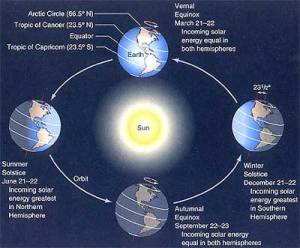 In spring, the Earth’s axis increases its tilt relative to the Sun, and the length of daylight rapidly increases for the relevant hemisphere. The hemisphere begins to warm significantly causing new plant growth to “spring forth,” giving the season its name. Snow, a normal part of winter, begins to melt, and streams swell with runoff. Frosts, if a normal part of winter, become less severe. In climates that have no snow and rare frosts, the air and ground temperatures increase more rapidly. Many flowering plants bloom this time of year, in a long succession sometimes beginning when snow is still on the ground, continuing into early summer. In normally snowless areas “spring” may begin as early as February (Northern Hemisphere) heralded by the blooming of deciduous magnolias, cherries, and quince, or August (Southern Hemisphere) in the same way. Subtropical and tropical areas have climates better described in terms of other seasons, e.g. dry or wet, or monsoonal, or cyclonic.
In spring, the Earth’s axis increases its tilt relative to the Sun, and the length of daylight rapidly increases for the relevant hemisphere. The hemisphere begins to warm significantly causing new plant growth to “spring forth,” giving the season its name. Snow, a normal part of winter, begins to melt, and streams swell with runoff. Frosts, if a normal part of winter, become less severe. In climates that have no snow and rare frosts, the air and ground temperatures increase more rapidly. Many flowering plants bloom this time of year, in a long succession sometimes beginning when snow is still on the ground, continuing into early summer. In normally snowless areas “spring” may begin as early as February (Northern Hemisphere) heralded by the blooming of deciduous magnolias, cherries, and quince, or August (Southern Hemisphere) in the same way. Subtropical and tropical areas have climates better described in terms of other seasons, e.g. dry or wet, or monsoonal, or cyclonic.
Often the cultures have locally defined names for seasons which have little equivalence to the terms originating in Europe. Many temperate areas have a dry spring, and wet autumn (fall), which brings about flowering in this season more consistent with the need for water as well as warmth. Subarcticareas may not experience “spring” at all until May or even June.
While spring is a result of the warmth caused by the changing orientation of the Earth’s axis relative to the Sun, the weather in many parts of the world is overlain by events which appear very erratic taken on a year-to-year basis. The rainfall in spring (or any season) follows trends more related to longer cycles or events created by ocean currents and ocean temperatures. Good and well-researched examples are the El Nino effect and the Southern Oscillation Index.
Unstable weather may more often occur during spring, when warm air begins on occasions to invade from lower latitudes, while cold 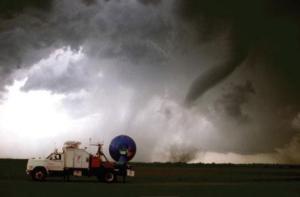 air is still pushing on occasions from the Polar Regions. Flooding is also most common in and near mountainous areas during this time of year because of snowmelt, accelerated by warm rains. In the United States, Tornado Alleyis most active this time of year, especially since the Rocky Mountains prevent the surging hot and cold air masses from spreading eastward and instead force them into direct conflict. Besides tornadoes, super cell thunder storms can also produce dangerously large hail and very high winds, for which a severe thunderstorm warning or tornado warning is usually issued. Even more so than in winter, the jet streams play an important role in unstable and severe weather in the springtime in the Northern Hemisphere.
air is still pushing on occasions from the Polar Regions. Flooding is also most common in and near mountainous areas during this time of year because of snowmelt, accelerated by warm rains. In the United States, Tornado Alleyis most active this time of year, especially since the Rocky Mountains prevent the surging hot and cold air masses from spreading eastward and instead force them into direct conflict. Besides tornadoes, super cell thunder storms can also produce dangerously large hail and very high winds, for which a severe thunderstorm warning or tornado warning is usually issued. Even more so than in winter, the jet streams play an important role in unstable and severe weather in the springtime in the Northern Hemisphere.
In recent decades season creep has been observed, which means that many phenological signs of spring are occurring earlier in many regions by a couple of days per decade.
Spring is seen as a time of growth, renewal, of new life (both plant and animal) being born. The term is also used more generally as a metaphor for the start of better times, as in the Prague Spring in the Southern Hemisphere is different in several significant ways to that of the Northern Hemisphere. This is because: there is no land bridge between Southern Hemisphere countries and the Antarctic zone capable of bringing in cold air without the temperature-mitigating effects of extensive tracts of water; the vastly greater amount of ocean in the Southern Hemisphere at all latitudes; at this time in Earth’s geologic history the Earth has an orbit which brings it in closer to the 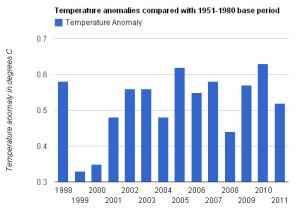 Southern Hemisphere for its warmer seasons; there is a circumpolar flow of air (the roaring 40s and 50s) uninterrupted by large land masses; no equivalent jet streams; and the peculiarities of the reversing ocean currents in the Pacific.
Southern Hemisphere for its warmer seasons; there is a circumpolar flow of air (the roaring 40s and 50s) uninterrupted by large land masses; no equivalent jet streams; and the peculiarities of the reversing ocean currents in the Pacific.
The spring season is full of transformations. The temperature rises to a more bearable degree, opposing Mother Nature’s last few months of freezing surroundings. The leaves we saw fall and flowers we saw wilt are now budding into lush, green, picture-perfect plants. Aside from the weather’s transformations that occur in the spring season, we are transforming our lives, too.
When spring rolls into our lives, we start to pick up the slack that winter instilled inside us of becoming sloths. TheNew Year’s resolution to join the gym starts being enforced, so you’re sure to have your bikini bod back in time for vacation. No more lounging on the couch all day watching football — in the spring you can gather friends together at the park for your own game.
Spring is a season in limbo between the winter and summer months, so nothing is absolute about the weather. You should keep an umbrella, rain jacket and coat with you in your car at all times, ready for whatever weather situations spring may throw your way.
Spring may have its drawbacks to our health with fluctuating allergies in the changing of seasons, but overall it is a positive season of new beginnings in weather, agriculture and self-awareness to take care of ourselves, and our surroundings. For the same reason that our bodies are temples we must preserve, our earth and environment need constant surveillance and the utmost care, too. Spring helps us to realize lessons as precious as this, where we learn the importance of embracing and adapting to change over time.

In many communities in the United States, once the weather starts to become nicer families get out in their yards and rake dead leaves, branches from behind bushes, trim bushes and branches from trees, plant new flowering bushes and plants/gardens, and spruce up the appearance of the home on the outside. Inside the home there is another form of spring cleaning going on. Closets are cleaned out, clothes and other items that that are no longer needed are donated to charity, or the family elects to have a yard sale, and thenwould donate the remaining items to charity.
Also in the community many neighbors get together to clean up parks, trails, streams and more to brighten up their towns. Even churches as well as other establishments do the same thing around their environs, and many people work together to assist the elderly and disabled that need work around their home and in the yard. Not necessary only in the spring, but all through the year.
It’s quite interesting to note that in the spring, as well as in the nicer weather I’ve seen many artists in different locations sketching or painting scenes, some of which are commissioned pieces or these sketches and/or paintings will become part of a larger showing of their work and interested patrons will be able purchase the work. They even have pieces of their work with them while they are painting/sketching so that the tourist/visitor can see them and buy them directly without going through a middleman.
 Even writers and poets seem to be more prevalent in the spring time than any other time of the year. It’s quite possible that between writers/poets/ artists/sculptors and many artisans spring brings a newer reality new awareness/new creativity to their art as well as their work, it’s just as if they have been reborn as well.
Even writers and poets seem to be more prevalent in the spring time than any other time of the year. It’s quite possible that between writers/poets/ artists/sculptors and many artisans spring brings a newer reality new awareness/new creativity to their art as well as their work, it’s just as if they have been reborn as well.
In the spring, even love is renewed and reborn between couples together for a long time and those that are just starting out on love’s path. When it comes to true love, commitment is more than just monogamy. It’s the knowledge that your partner cares for you and has your back, no matter what the circumstances. People who are strongly committed to one another will, when faced with seemingly negative information about their partner, see only the positive.
Intimacy is a crucial component of all relationships, regardless of their nature. In order to know another, you need to share parts of yourself. This self-revealing behavior, when reciprocated, forms an emotional time this bond strengthens and even evolves, so that two people merge closer and closer together. Intimacy by itself if is a great friendship, but compiled with other things, it forms an equation for true love.
Spring is rebirth and delight and colour.
– Spring –
Spring knows well the workings of the wheel,
Past winters past and winters still to come.
Released from time, the moment spreads its wings;
Infinite, it leaves behind all things,
Neither here nor there, nor to nor from,
Grace reborn within what we call real.
Poet: Unknown
Kathy Kiefer

